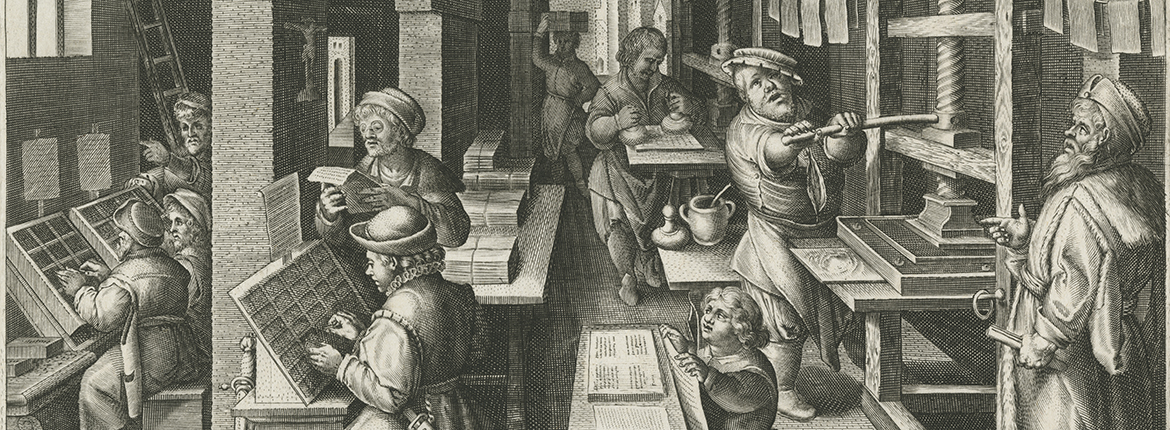The year 2023 marks the 550th anniversary of the first known Polish print titled "Almanach Cracoviense ad annum 1474” being published in the Kasper Straube’s printing house. It was also the first known Cracovian print, thanks to which Cracow is considered the cradle of Polish printing, which is why an international conference on printing – its beginnings, history, transitions, is being organised in this city. What is also worth mentioning here, is that in was in Cracow where the most famous printers, such as Schweipolt Fiol, Kasper Hochfeder, Johann Haller, the Ungler family, Hieronymus Vietor, the Scharffenber family, the Cezary family, the Piotrowczyk family or the Schedl family used to work. This momentous anniversary and excellent site mark a good time for viewing the history of print from the print research as well as from the auxiliary studies perspective, which complement the bibliologic viewpoint. The proposed and presented issues include the history of particular print houses, their typographic sources and production. Naturally, the figures of people with the most tremendous influence on the current form and technology of print will also be portrayed. Thus, the aim of the subsequent conference organised by the Scientific Library of the PAAS and PAS in Cracow will be a comprehensive, interdisciplinary reflection upon both the Cracocovian printing history from the viewpoint of the domestic and foreign centres, and on modern publishing market – starting from printing techniques, as well as the visual layer and Artist’s book and the one that differs from the accepted codex canons, or unique books, and repositories, digital libraries and self-publishing. The printing production itself – fonts, papers, bindings, as well as its distribution and availability may also be analysed. From the point of view of the print research, the issues such as storage, protection, preparation and sharing of both valuable, historical collections and modern publishing, ownership marking and attempts to study the so-called life of collections on the basis of provenance marks are also important. To sum up, we invite you to a discussion about what was and is happening to the book and print, how the functions and roles of print have been influencing different aspects of our lives.
The event will be accompanied by presentations of the oldest Cracovian prints, as well as a visit to the Museum of Engineering and Technology in Cracow and a study trip to the Printing Museum in Cieszyn (exhibition, machines, workshops).



